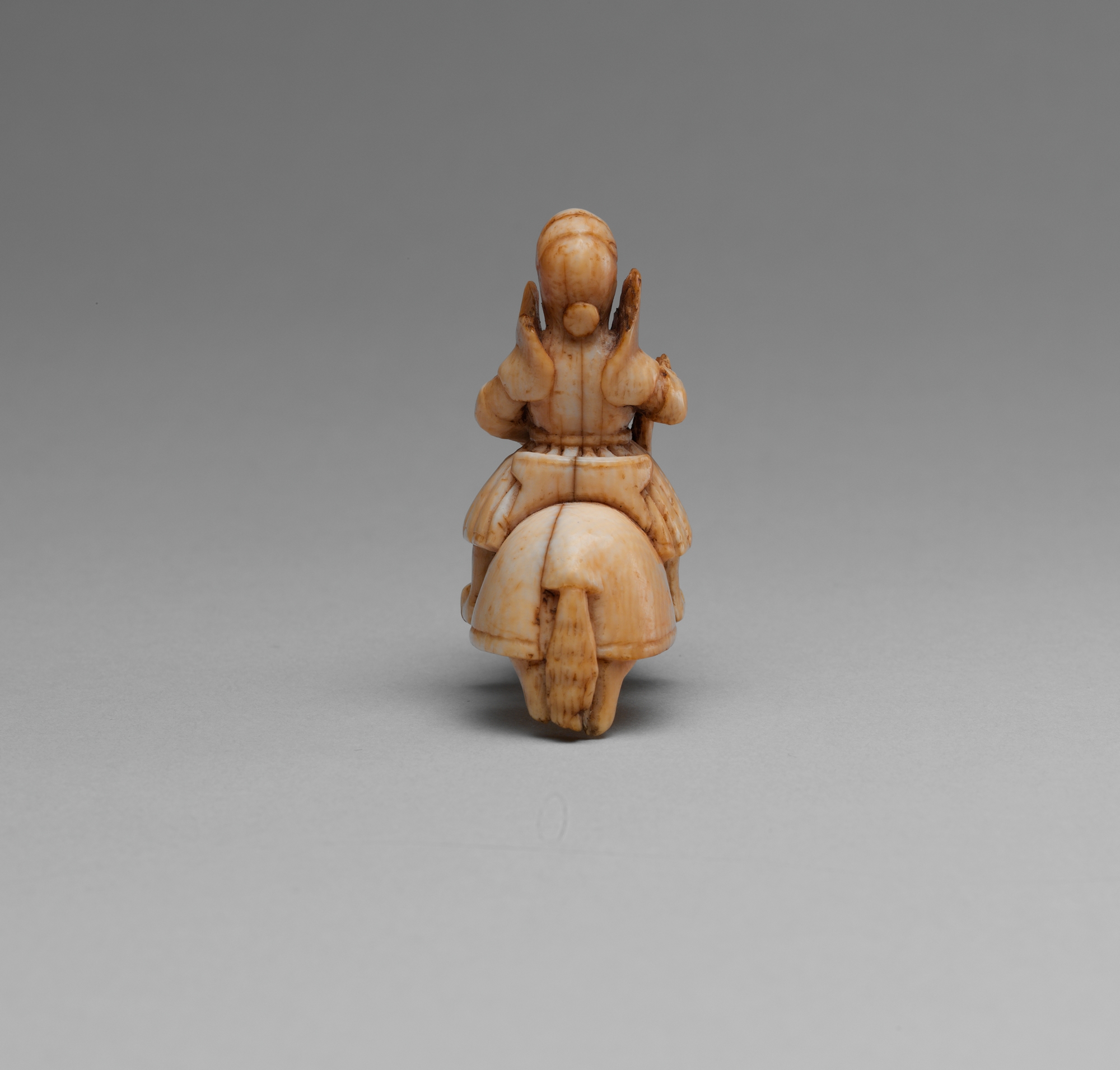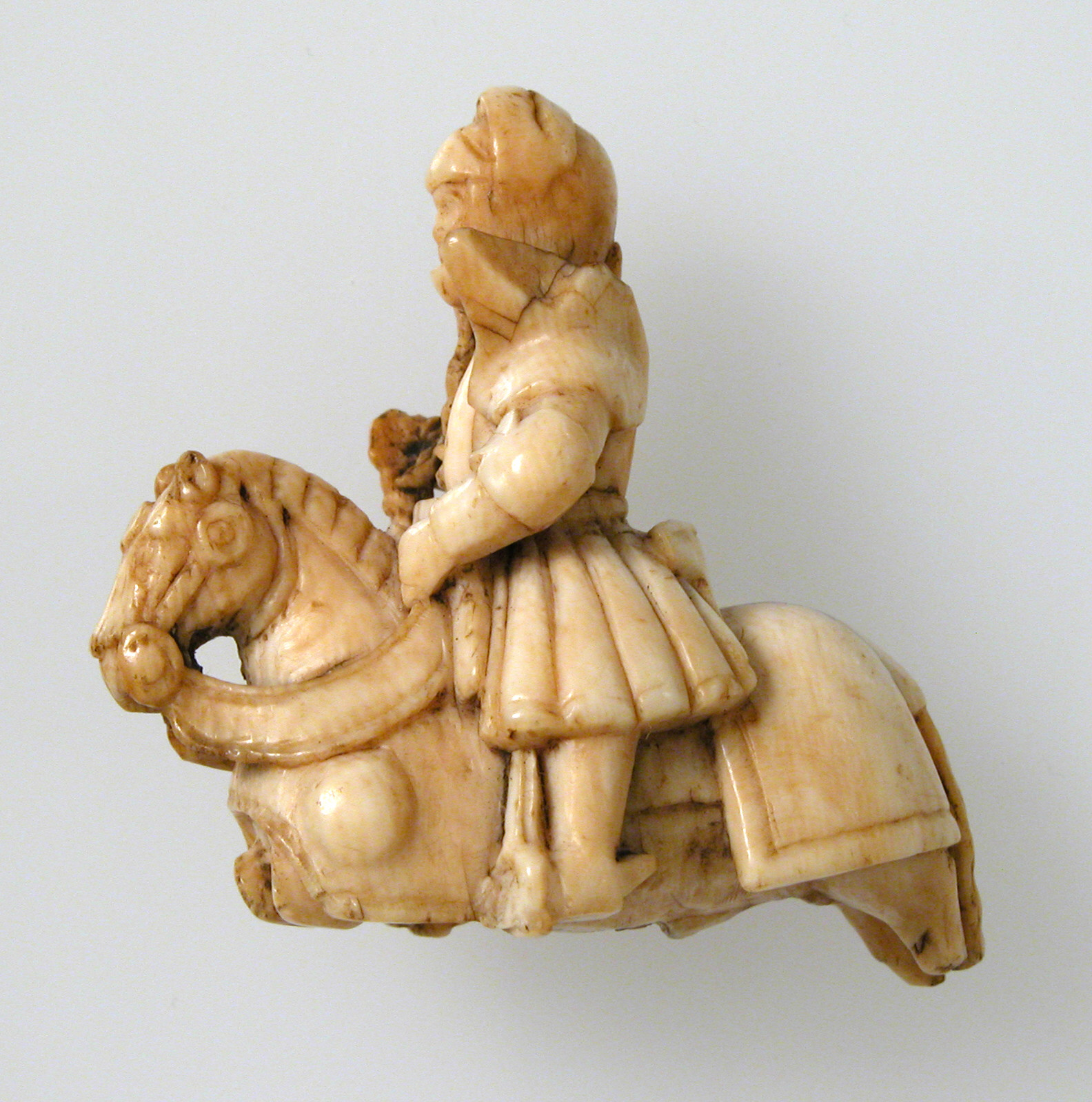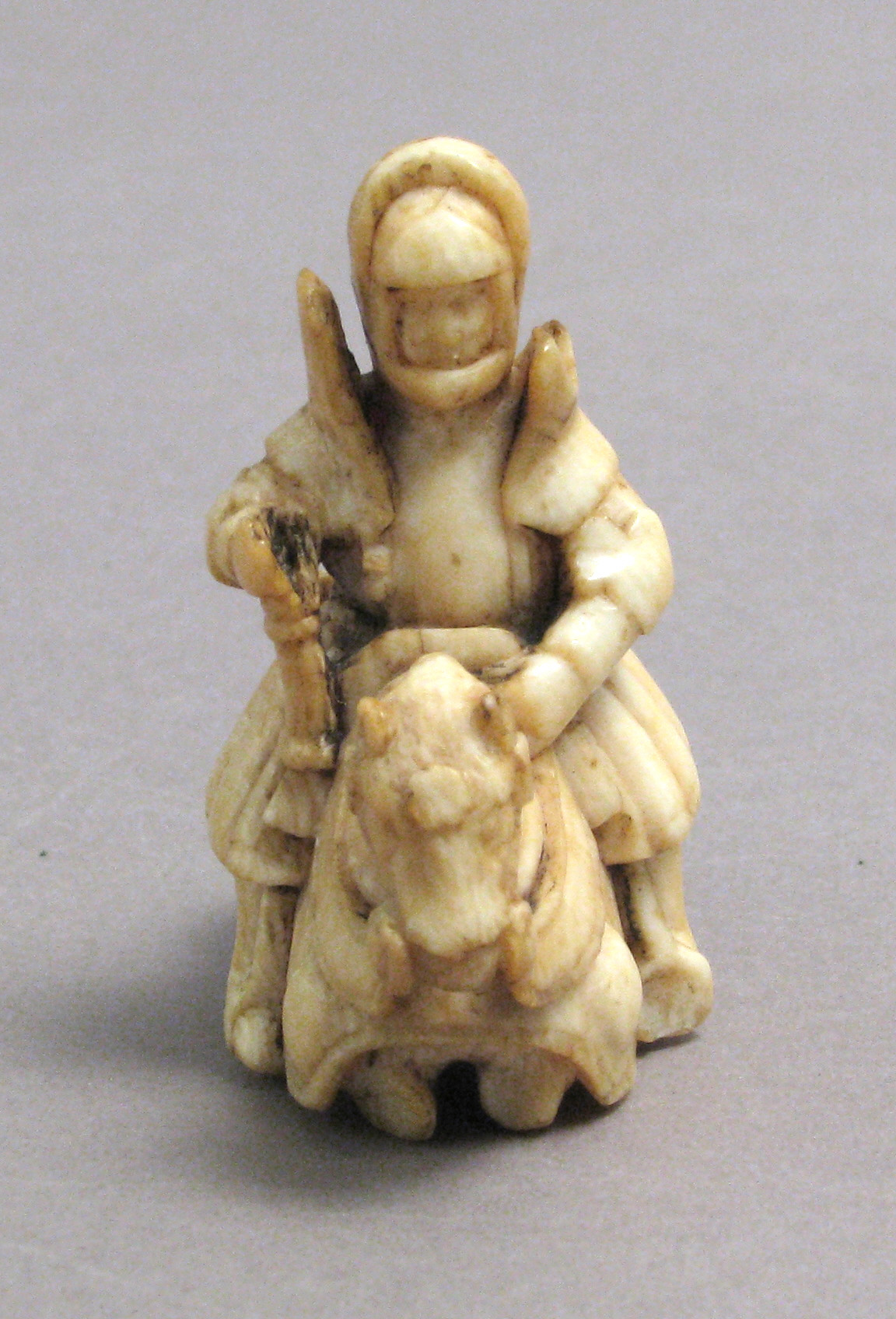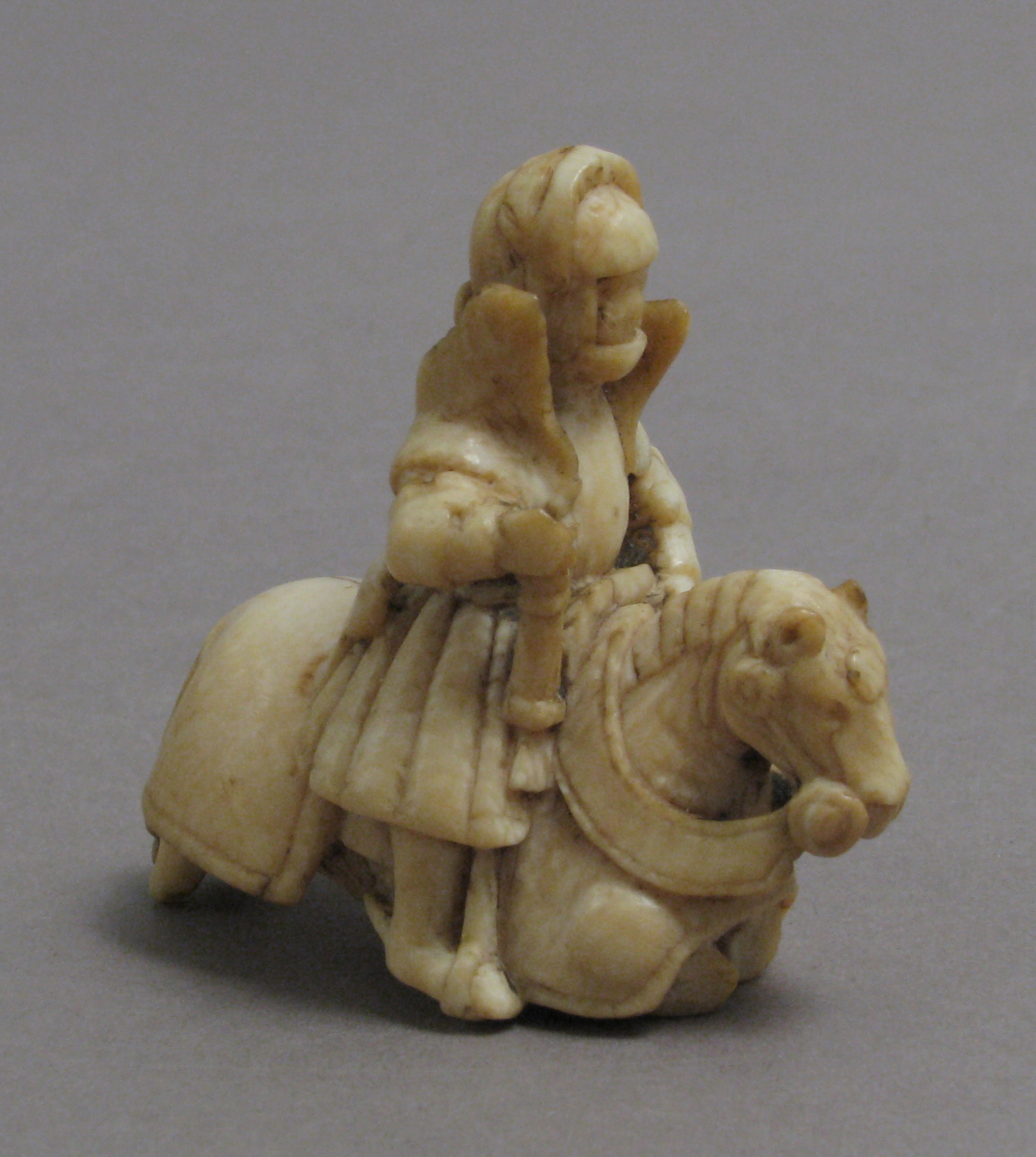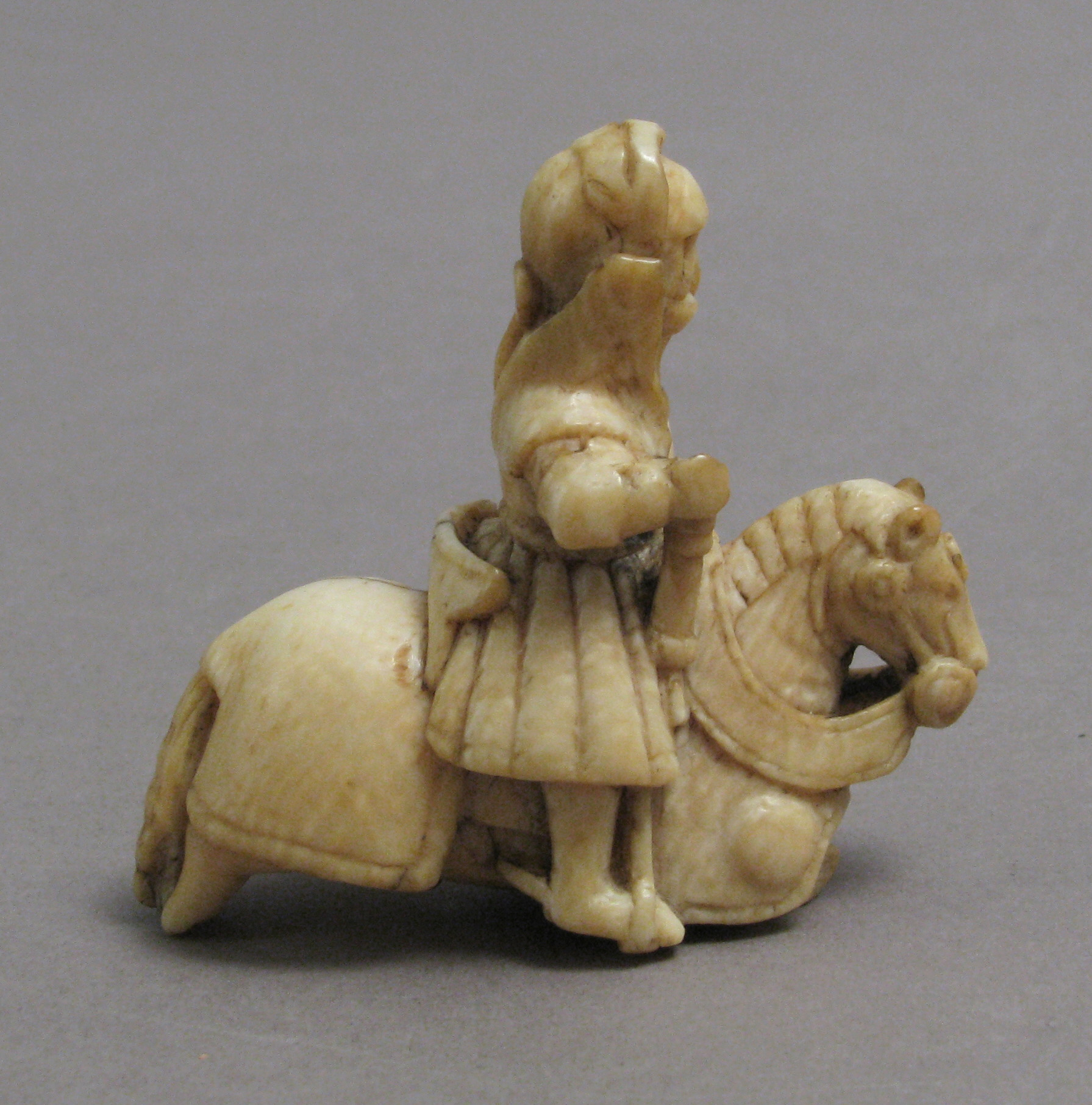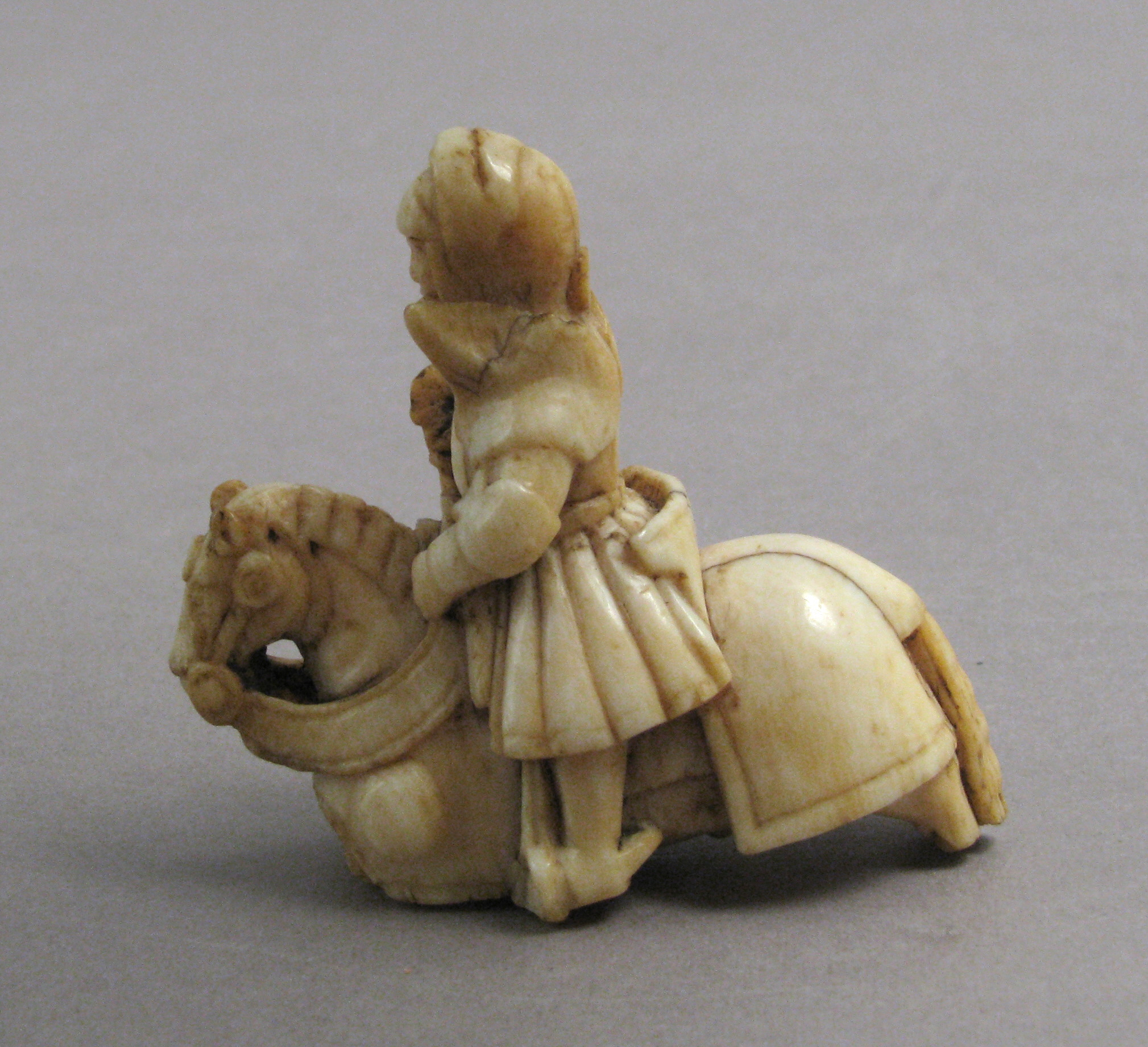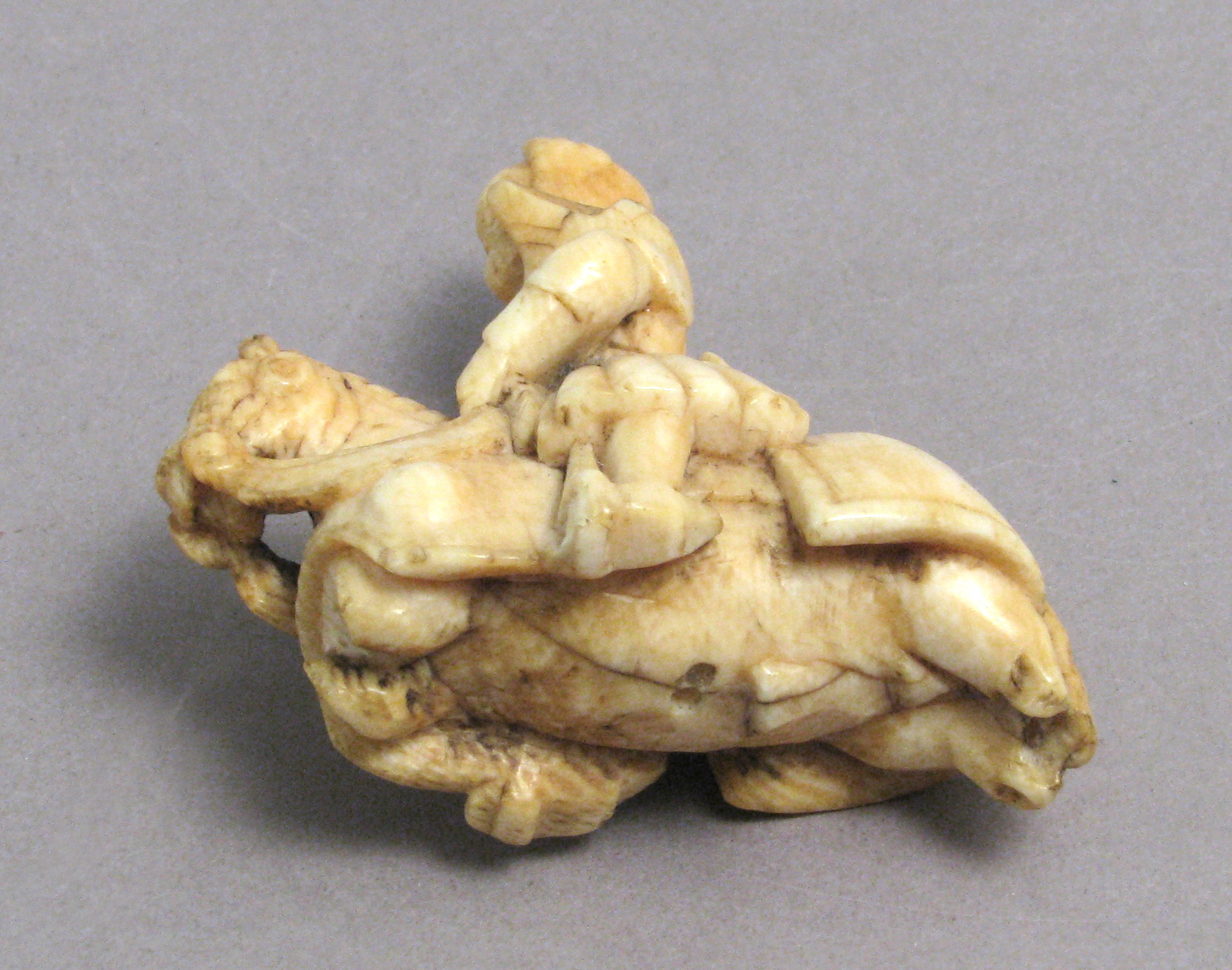Chess Piece in the Form of a Knight
Western European, possibly Germany or England
This ivory chessman––like a similar chess piece also in the Metropolitan Museum's collection (acc. no. 68.95), the only survivor of an otherwise vanished set––nevertheless gives a good impression of a complete armor for both man and horse as worn throughout Europe during the early sixteenth century.
Despite the somewhat stylized representation of the armor, several elements of the figure are noteworthy. As part of a complete armor, the man-at-arms wears a helmet of armet type, shoulder defenses (pauldrons) with large, upright flanges for additional protection of the neck (haute-pieces), and a textile skirt. Of the lance, which formerly rested on the side of the saddle, only the part below the rider's right hand survives.
The bard comprises a light, open shaffron fitted with a rondel or escutcheon plate but without ear or eye guards; a crinet of several plates, probably fitted with an additional mail defense for the throat; a peytral; and a crupper. The latter two elements show little detail, except for a prominent boss on either side of the peytral and a band running along the main edges, but their general appearance may indicate that both are made from leather rather than metal plate. Examles of leather armor of very similar form are also in the Metropolitan Museum's collection (acc. no. 26.235.1–.3).
While the armor for the horse's body is of a type worn throughout Europe during the early sixteenth century, until at least about 1540, its combination with several elements of the man's armor allows for a somewhat more definite dating. The combination of the armet with a globose breastplate, large pauldrons with tall upstanding guards (hautepieces), and a skirt points to the early sixteenth century. Such skirts, often made from elaborately woven or embroidered textiles, had been worn with armor in Italy since at least the mid-fifteenth century, but became popular throughout the rest of Europe shortly after 1500. In very rare instances skirts were even imitated in steel plates (so-called tonlets) and worn as an integral part of the armor. Considering the exceedingly tall hautepieces on the pauldrons, rarely found before 1510, and the fact that bards of this type became less popular not long after the third decade of the century, the most probably date for this chess piece is between about 1510 and 1530.
Due to rights restrictions, this image cannot be enlarged, viewed at full screen, or downloaded.
This artwork is meant to be viewed from right to left. Scroll left to view more.


